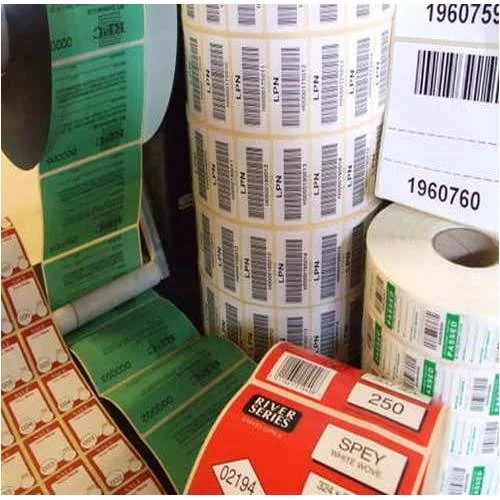- December 19, 2024
- admin
There are various barcode uses, which will save a company time and money. Little attention is given to how those barcodes will be printed and presented when a barcoding system is being implemented. However, one often disregarded feature of barcoding is using barcode labels. The correct barcode is crucial, so the company’s success or failure rests on this choice. The whole system can be jeopardized if labels fail to serve their intended purposes.
Before choosing a barcode from the best barcode label manufacturer, one should consider various problems. Want to know what they are or what elements will enable you to choose the ideal barcode label? This article explores this subject.
Important Things to Consider Regarding The Appropriate Barcode Label
Selecting the appropriate barcode label for your goods requires careful thought on various elements. Important variables include temperature, chemical exposure, surroundings, surface type, and lifetime. Knowing every category will enable you to avoid selecting the incorrect label.
Use
Selecting a barcode label depends greatly on what your barcode label will be used for and attached to. To choose the proper barcode label, you must address issues such as indoor or outdoor use, the impact of moisture, and temperature range.
Tenacity
Some barcode labels have to survive for long periods. While some labels only need to survive for a brief period—that of the shipment—the labels, printed barcodes, and verbiage should be considered.
Context
Are your barcode labels going to be subjected to harsh environments? Each of these factors—direct sunlight, dirt, grease, heat, cold, water, food, or anything else—must be considered if your barcode labels are to function as they should.
Dimensions
Although your label’s size is crucial, its importance depends on your desire to maximize your savings. Although most items have little labels, they should not be too tiny, as scanning them is challenging. The product or company determines the size of the barcode label, so it is crucial to specify the perfect size.
Strong Temperature
When selecting a label for a product, take the application into account along with the service temperature. While the service temperature is the range your label is continuously exposed to in real time, the application temperature is just the temperature at which the product is labeled. Standard labels work well when the application temperature is a minimum of 25 ° F and the service temperature is between -65 ° F and 200 ° F. Should your labeling surpass this limit, you may have to utilize a specialized adhesive.
Abrasion Resistance
Does your application or product have to resist extreme circumstances such as rubbing, exposure to other chemicals, or contact with other surfaces? Over time, all these demanding factors compromise the label’s legibility. Some bar media may, therefore, be utilized or coated to shield printed barcode labels from damaging lights, abrasives, and chemicals.
Should the barcode label call for scratch or rubbing resistance, you might utilize a ribbon with a high resin content to provide a great resistance level. Another crucial consideration remains when deciding on a barcode label for your goods. There are some permanent and some temporary barcodes. Never use permanent adhesives if labels are used temporarily only.
Label Durability
If you want to spend a lot of time reading your label, you run a higher risk of coming across chemicals, wetness, and scratches. Short-lifetime labels do not call for great resistance and durability. Under such circumstances, a direct thermal paper label will do.
Face Stock
The correct face stock is vital. The decision between direct thermal and thermal Transfer is merely the first one. Next, you must decide whether you want a synthetic substance, vinyl or plastic, or a paper label. Your particular product needs will help to define this.
Direct Thermal vs. Thermal Transfer
Stated differently, should you print with or without a ribbon? Once again, it boils down to application, surroundings, and durability.
Direct Thermal transfers your barcode picture to the heat-activated material. This does away with the requirement for a ribbon and performs effectively in regulated settings free of heat or direct sunshine.
Thermal Transfer uses a wax or wax-resin/resin ribbon to heat your label material, enhancing durability and readability for resistance to heat and direct sunshine.
Industry Norms and Compliance
Choosing a barcode label calls for following industry norms and compliance, especially in controlled industries such as international commerce, food and beverage, and healthcare. These guidelines guarantee that labels satisfy certain readability, durability, and format criteria, enabling smooth operations and interoperability across many systems and countries.
Considerations for Label Lifespan
Maintaining the efficiency and reliability of your inventory and tracking systems depends on you considering the lifetime of your barcode labels. Various elements define the lifetime of a label: climatic conditions, frequency of handling, label material, and print quality.
Choosing strong materials combined with advanced printing techniques, including thermal transfer printing, is essential for labels exposed to demanding situations or great handling. This mix guarantees that, over time, labels stay both firmly affixed and legible.
Conclusion
Choosing the right barcode from the best barcode label manufacturer is a crucial choice that greatly influences your company’s operational effectiveness and success. It’s important to consider each element covered in this article, as different barcode label types fit different environmental conditions, surfaces, and operating needs.
Choosing with knowledge guarantees that your barcode labels fit your particular requirements, improving tracking accuracy and inventory control. Remember that choosing and developing barcode labels aims to maximize your operations for the highest dependability and efficiency.
